Instructions: Click on the cell type you wish to explore. THESE ARE NOT MY ORIGINAL IMAGES AND ARE USED FOR EDUCATIONAL PURPOSES ONLY.

Prokaryotic cells are very small and mostly do not have organelles, the only exceptions being the cell membrane, cytoplasm, and ribosomes. The DNA of prokaryotic cells is not contained in a nucleus, and their cell respiration is conducted without the aid of a mitochondria. The structure labeled 1 below is the cell membrane, 2 is the cell wall, and 5 is a group of ribosomes.


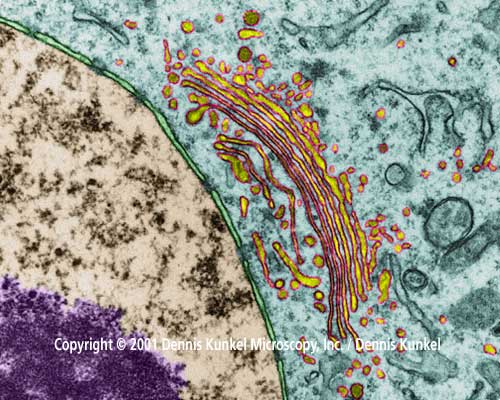
Golgi complex: The Golgi apparatus is found in both plant and animal cells. The Golgi complex is responsible for packaging proteins and other molecules for export from the cell. The Golgi packages these molecules for export via exocytosis. The Golgi apparatus is the organelle where proteins intended for export would move after they were assembled in the rough Endoplasmic reticulum.


Nucleus: The nucleus is found in both plant and animal cells. Prokaryotic cells, however, do not have them. The nucleus is the control center of the cell. The nucleus holds the DNA, the molecule responsible for carrying the cell's genetic information

Smooth Endoplasmic Reticulum: The smooth ER is responsible for synthesizing lipids(fats). It also plays a role in detoxifying substances such as alcohol. The smooth ER is found in both plant and animal cells.

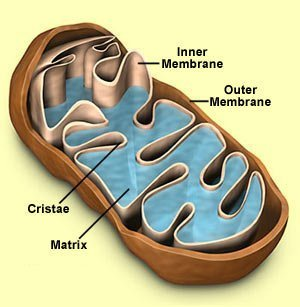
Mitochondria: The mitochondria is known as the "powerhouse of the cell" because it is the site of cellular respiration. Therefore, the mitochondria produces ATP providing energy for all cellular functions. The mitochondria is found in both plant and animal cells.

Lysosome: The lysosome is the organelle responsible for destroying waste in the cell. Large foreign substances such as cells can be brought into the cell by endocytosis. Then the lysosome uses digestive enzymes to destroy the foreign invaders. Lysosomes are also known as the "suicide sacs" because if a cell is damaged beyond repair the lysosome releases all of its digestive enzyzmes to destroy it.
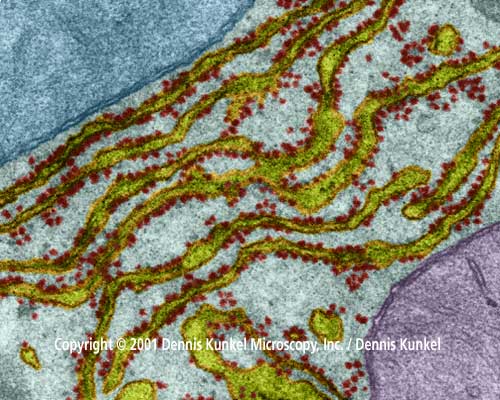
Ribosome: This is the only organelle that is found in both prokaryotic and eukaryotic cells. The ribosome is the site of protein synthesis (where proteins are made). In the ribosome, amino acids, the building blocks of protein, are assembled into a chain using instructions from DNA. The ribosomes are often found attached to the Rough Endoplasmic reticulum because after protein chains are assembled in the ribosome, they are taken to the rough ER for further assembly.
Rough Endoplasmic Reticulum: The rough ER is the organelle responsible for continuing the assembly of proteins that was begun in the ribosome. The rough ER takes the amino acid chain and folds it into its final three dimensional (3D) shape

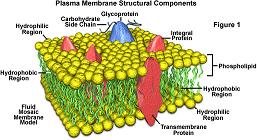
plasma membrane (cell membrane): The plasma or cell membrane surrounds the outside of all prokaryotic and eukaryotic cells. It provides protection for the cell by only allowing certain substances in (semi-permeable). Proteins in the membrane are used for cell transport(active transport and facilitated diffusion), communication between cells, and as receptors.

Vacuole: The vacuole is an organelle used for storage in the cell. Water, waste, or food can be stored in vacuoles. Plant cells have large central vacuoles which are used for storing water. The vacuole shown above is found in a plant cell.
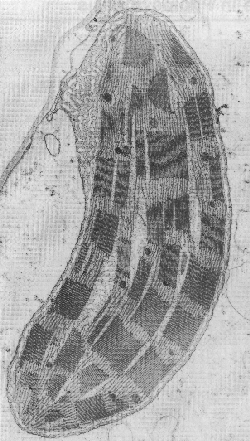

Chloroplast: The chloroplast is only found in plant cells. It is the site of photosynthesis in which light energy is converted into chemical energy in the form of glucose. The light reaction of photosynthesis takes place in the area of the chloroplast known as the thylakoid. This is the area that contains the pigment chlorophyll and absorbs light energy. The area surrounding the thylakoids is known as the stroma and is where the Calvin cycle takes place.
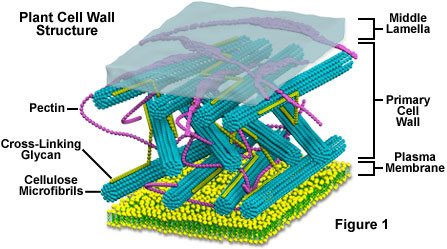
Cell Wall: Cell walls are only found in plant and prokaryotic (bacterial) cells. Cell walls provide additional protection for the cell. Also, they give plant cells turgor pressure. This means that when a plant takes on a lot of water, the cell wall allows the cell to become turgid(rigid) instead of bursting.